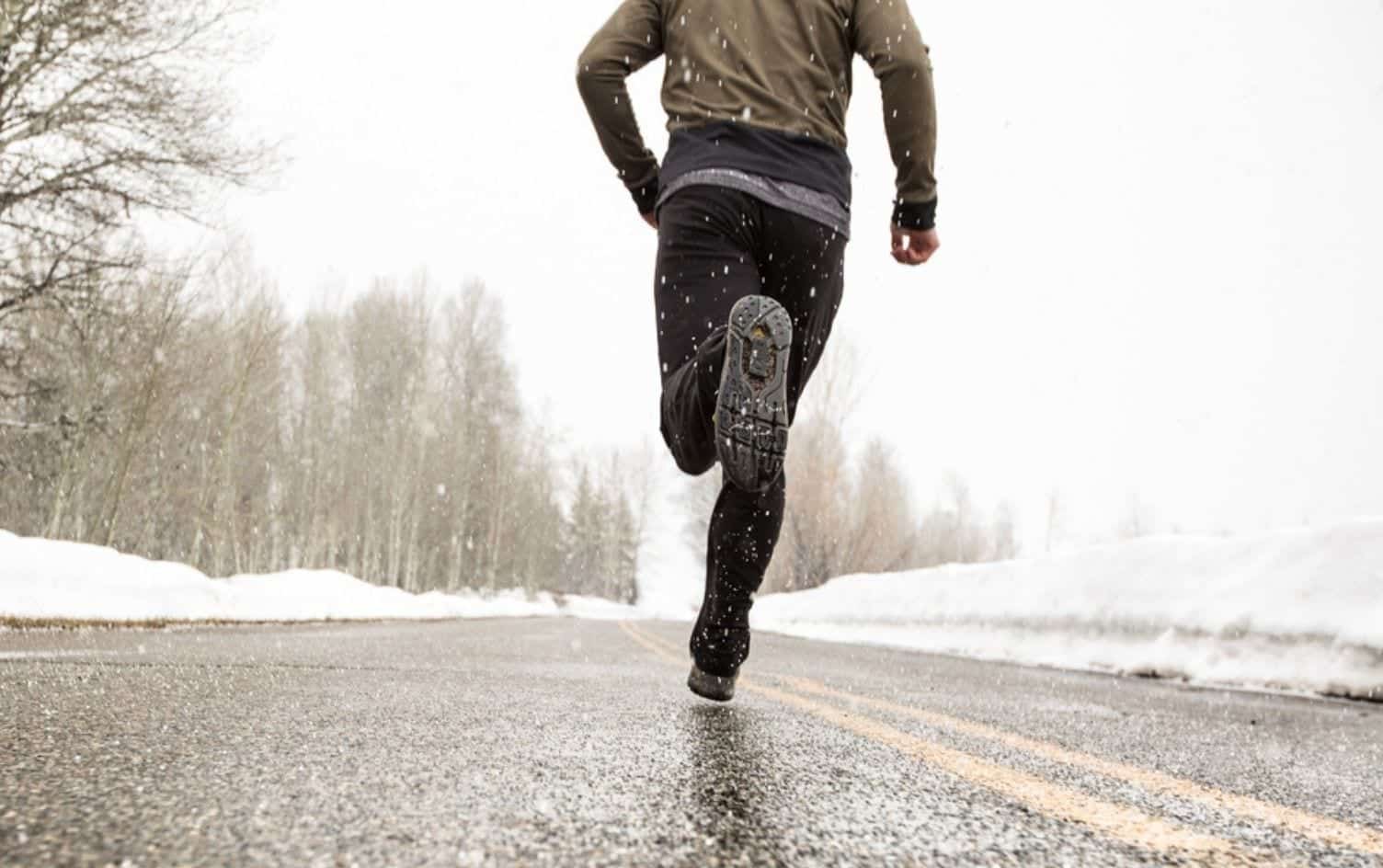Training in cold weather requires so much more from an athlete beyond knowing how to layer gear correctly. It should come as no surprise that nutrition considerations are different at lower temperatures.
Here’s a quick primer on what you need to know about fueling your cold-weather workouts:

Being cold amplifies caloric burn. The act of shivering takes energy and can increase carbohydrate burn. The body has to work harder to maintain its core body temperature, warm and humidify each breath and keep working muscles from getting too cold. Exposure to low temperatures also promotes production of brown fat, a more metabolically active type of fat, in the body.
Overall, the more you’re exposed to cold, the higher your metabolic rate becomes — by as much as 15%. On top of basic metabolic changes, training in the winter typically includes combatting brutal weather conditions. Think about it, your body works extra hard to stabilize muscles on icy runs and trudge through snow on hikes. All this means more calories are needed in cold versus ambient temperatures to fuel the same effort.
The solution: Take along an extra training snack for any significantly tough or long efforts (more than 90 minutes) to make sure you’re providing your body with the fuel it needs for optimal performance. Also, aim to take in carbohydrates at quicker intervals (say every 15 minutes) than you might during warm weather workouts.

The ability to reach, open and consume fuel on the go is something that needs special attention during cold weather training. Wearing thick, protective gloves can inhibit your ability to reach into a pocket and grab fuel or tear open a sealed snack package. Besides gloves, wearing layers of clothing can bury your food stash, making it difficult to access. Also, you might take fewer breaks since pausing to eat or drink in very cold temperatures can leave your body temperature plummeting and put you at risk of hypothermia.
The solution: Pre-open snacks so they are easier to consume. Carry a pack or have a pocket on your outermost layer to make carrying and accessing fuel easier.

When you’re hot and sweaty, reaching for water during your workout is a no-brainer. However, cold weather training has the same, if not greater, fluid requirements. Cold, dry winter air is more difficult for the body to breathe and process; it has to be warmed and humidified. This leads to greater water losses through respiration and puts athletes at a higher risk of dehydration.
The solution: Warm beverages are more appealing in winter, so try putting tea, coffee, broth or just warm water in your workout bottle (or thermos). Some sport drinks are even made to be consumed warm like Skratch Labs Apples with Cinnamon hydration mix. Instead of relying on visual cues (sweat) as a reminder to sip, set a timer on your phone or fitness watch. Drinking 2–4 ounces every 15 minutes is recommended.
READ MORE > EVERYTHING YOU SHOULD KNOW ABOUT WINTER HYDRATION

Cold weather can be a great thing for fueling workouts; you can bring more variety of whole foods along (sandwiches, chocolate) without risking spoilage or messy melting! This is great for taste buds and nutrient variety. However, in very cold temperatures, some sport food will become practically frozen and difficult to consume. Some gels can go from thin and smooth to a thick paste which can be a problem for those with texture issues and bars can become so hard they are almost dangerous to bite into and chew. Water can also become frozen inside sport bottles. These factors can make fueling and hydrating mid workout almost impossible, putting you at risk for bonking and reduced performance output.
The solution: Know how your preferred food will react at extreme temperatures. Experiment with easier to chew, whole-food options like potatoes, sandwiches, dried fruit and homemade energy bars/bites. Opt for insulated bottles to keep your water from solidifying.

Sport food is generally cold; gels, chews, bars, smoothies, overnight oats, etc. In cold temps, these options become undesirable. Ignoring nutrition demands can lead to decreased performance, reduced recovery, increased risk of illness and injury and a higher rate of general fatigue.
The solution: Swap cold items for warm options. For example, instead of cold overnight oats for a pre-workout meal, make a bowl of hot porridge. Skip blending a cold smoothie post workout in favor of a steamy bowl of soup which is a nutritious way to replenish fluids, electrolytes and calories lost in training. Don’t be afraid to get creative with your mid-training food as well; foil-wrapped paninis or roasted potatoes can be brought along to provide more satiety. Also, try adding heat in the form of spice (cayenne, chipotle, ginger, nutmeg, jalapeno, etc.) to foods you consume which can help warm the body from the inside out!

Winter sports commonly take place at higher elevations which puts additional strain on the body. Fluid losses are greater, metabolism increases, carbohydrates are used more rapidly than other macronutrients and red blood cell production increases, causing a greater demand for iron, a nutrient which helps get oxygen to working muscles. Layers of clothes and cloudy skies mean less exposure to the sun and a risk of vitamin D deficiency.
The solution: Consume a diet rich in antioxidants, iron (fortified cereals, red meat, eggs), vitamin D (milk, eggs, mushrooms, salmon) and consider adding a multivitamin to help cover your bases.




